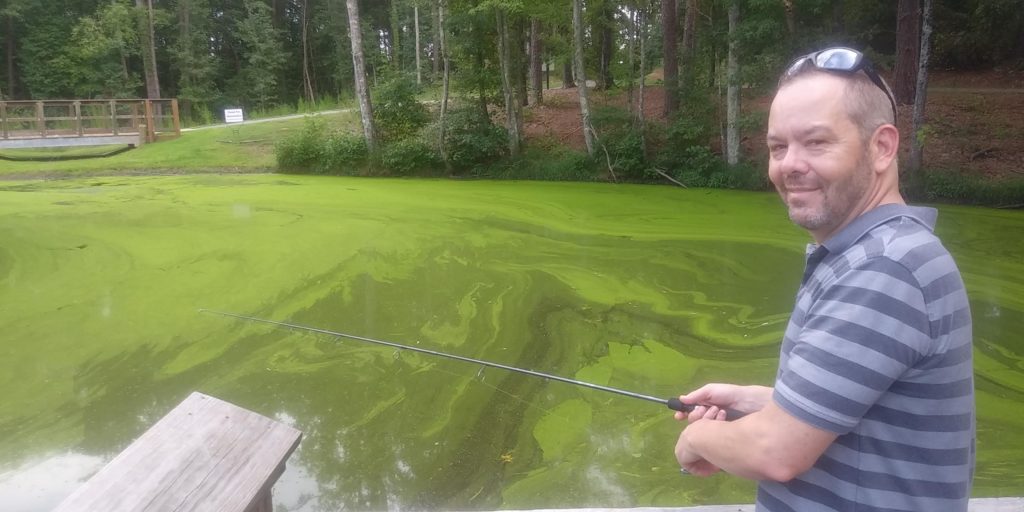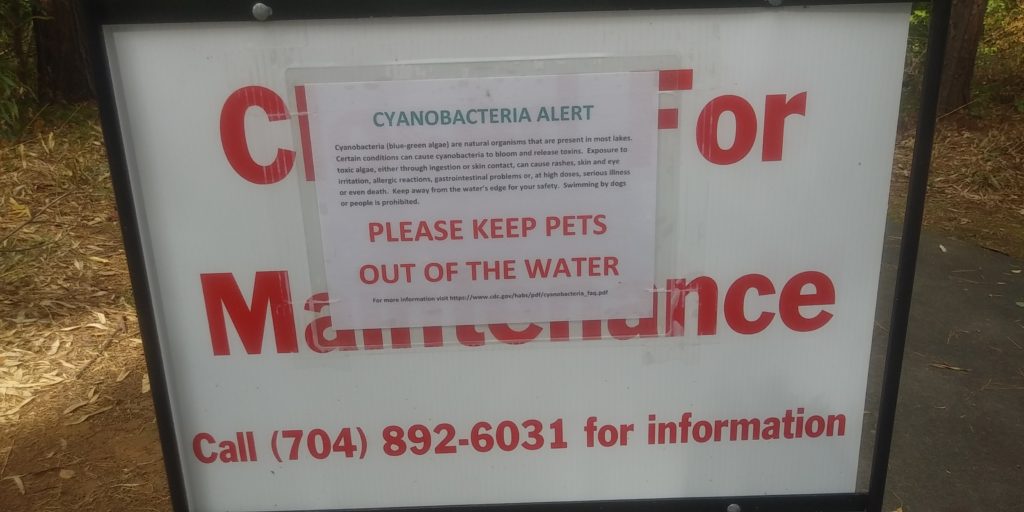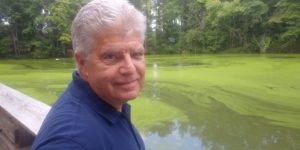
DOUG ZINK AT POND: CATCH AND RELEASE
Aug. 14. The thick green scum in a Robbins Park pond is most likely not going to cause serious illness to people, in part because of our body mass, and the fact that we’re not going to ingest it.
For dogs, however, it can be deadly.
At least four pet dogs in North Carolina and Georgia died after swimming in water contaminated with a toxic organism known as cyanobacteria.

SIGNS AROUND POND AT ROBBINS PARK
“When dogs are jumping or playing in water, I think they inadvertently get water in their mouth and swallow it. There is no way I’d let that water get in my mouth,” said Dr. Michael Miltich, a medical doctor who is the mayor pro tem of Cornelius.
Warm temperatures and nutrients from farms, golf courses and lawns can cause toxic algae and bacteria to grow out of control.
The result can be a toxic algae bloom.
The bloom in Robbins Park is gross, to put it mildly. The town’s PARC staff noticed a “significant algae bloom last week” on the southern pond at Robbins Park. They asked Charlotte Mecklenburg Stormwater Service to determine if it would impact the fish habitat at the pond.

MILTICH
“Unfortunately, test results came back positive for cyanobacteria. There is no easy way to determine if it is toxic so we do not know if it is harmful or not, but took precautionary measures regardless,” PARC director Troy Fitzsimmons wrote to commissioners.
The pond has already been treated by a pond management company and signs have been posted around the pond to warn the public of the potential hazard.
Of course, dogs can’t read, so owners are advised to steer clear of the pond.
As the planet warms, these blooms are becoming more frequent — leading to a greater chance for human and animal exposure.
Cyanobacteria are among the oldest life forms on Earth. They’re actually a good bacteria, but with an abundance of phosphorus, nitrogen and heat, they can get out of hand.
There is no way to tell if a bloom is toxic just from looking. “They acted on the side of caution and had the pond treated,” Miltich said. It can occur in fresh water, or brackish salt water.
For Birkdale resident Doug Zink, it was fishing as usual, and relaxing at the pond in Robbins Park. He doesn’t eat the fish he catches, he releases them.
Here is a good background article on the subject from the Surfrider Foundation’s “Beachapedia” http://beachapedia.org/Cyanobacteria




